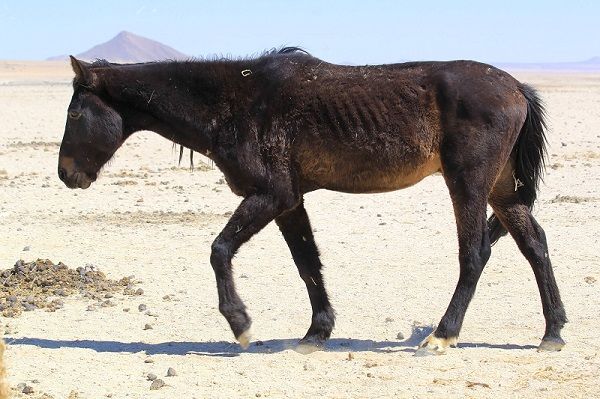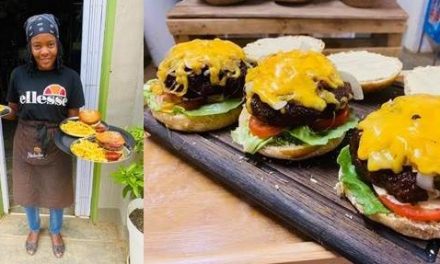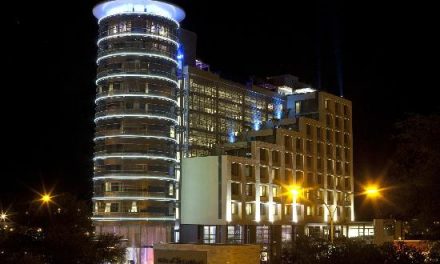
Namib wild horses on their last legs – only surviving through human intervention

One of Namibia’s top ten tourist drawcards is doomed unless serious intervention takes place in the near future. According to the Namibia Wild Horses Foundation, the once-thriving groups of wild horses around Garub in the Namib Naukluft Park have now been decimated to only 130 animals with a glaring distortion in the population demographics, only 40 are mares, the rest are all stallions.
The situation of this last group is precarious. Since 2013, the southern Namib has experienced a continuous drought reducing natural fodder to zero. The fouls have also been taken by hyenas with not a single one surviving for the past five years. Since the hyenas’ natural prey has migrated to the north following good rains in those areas, the predation on the Garub horses has intensified.
The last remaining horses are only surviving because they are fed with baled fodder brought in from other areas of Namibia.
“As the hoped-for Winter rains have not materialised in south-western Namibia, the plains are still a barren sandpit with little or no vegetation. The survival of the Namib horses is still very much dependent on the feed provided by the generous donations from the public. Horse numbers continue to plummet and not a single foal has survived since the onset of the drought in 2013” the wild horse foundation stated this week, renewing its plea for official intervention.
“The condition of the remaining horses has fluctuated in the last 23 months, depending on the quality and palatability of the feed supplied. Nearly a quarter of the horses have deteriorated dramatically and are in poor or very poor condition, half are in mediocre condition and the rest remain in good condition” said the foundation emphasising that it will only be possible to save a core group if the provision of fodder continues.
On an immediate strategy, the foundation said “when the survival of the wild horse population came into question, the foundation approached the Ministry of Environment and Tourism to find a possible solution. Various options were discussed, including the relocation of the wild horses to a ‘Wild Horse Sanctuary’ on suitable land where they would be protected from the hyenas. It, however, remains a dream and does not seem like a viable option right now as the land that is available for sale comes at a large investment of almost N$35 million, an amount that will take much effort to raise, and considerable time, which the horses may not have.”
As an interim measure, the ministry has allowed the very unconventional solution of feeding the hyenas as well to reduce their natural inclination to tackle the weakened and young horses.
Meanwhile the Aus-Lüderitz Tourism & Business Action Group has been formed by a group of concerned individuals, most of whom are directly involved in the tourism industry, to lobby for the wild horses’ survival. Through the Namibia Chamber of Commerce and Industry’s Lüderitz branch, they have approached the ministry to underscore the value of the horses for tourism.
Visitor statistics show that the Namib wild horses are one of the top ten national tourist attractions.
The action group stated that they do not advocate the relocation of the horses which have been in the desert for more than a century and are fully acclimatised to their harsh environment. Instead, they advocate a wildlife management plan for both the horses and the hyenas.
For the time being, the horses can not survive without the care of the staff at the nearby Klein Aus Vista Lodge, one of the establishments in the Gondwana Collection. Feeding has to continue until the southern Namib has received adequate rain, a factor over which none of the human custodians has any power.
The plight of the wild horses can be followed on the website of the Namibia Wild Horses Foundation at www.wild-horses-namibia.com or on the facebook page at www.facebook.com/NamibiaWildHorses .












































